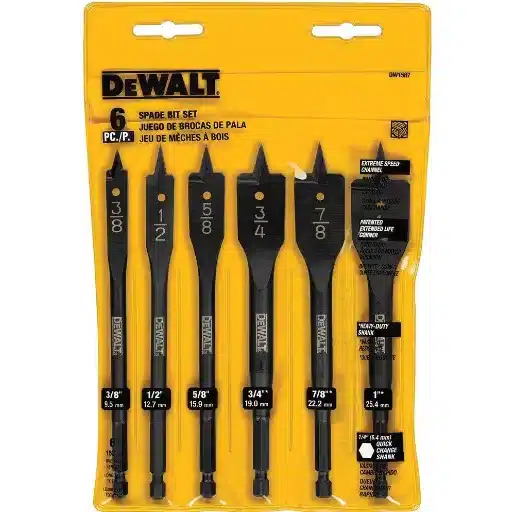Maintaining a healthy and immaculate lawn does not have to involve noisy gas-powered machines or fancy gadgets. Reel mowers provide an old, green method of giving your grass a neat and precise cut. This guide delves into everything about the reel mower-from its peculiar benefits to mechanism and how to choose the best one for your yard. Whether the intent is going greener or looking for low-maintenance ways to mow the lawn, this ultimate guide will give you insight and advice that can flip lawn care upside down.
What is a Reel Mower?
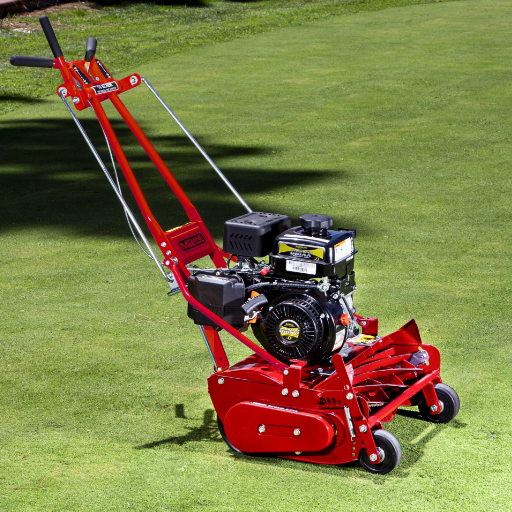
A reel mower is a manual or motorized lawnmower that uses a set of rotating blades to cut the grass. Unlike traditional rotary mowers, which chop grass with a single horizontal blade, reel mowers have multiple blades set on a cylindrical reel. As this reel spins, the blades cut like scissors, hence, clean and precise cutting. Reel mowers are recognized for their simplicity, environmental friendliness, and capability of yielding a healthier and even lawn.
Definition and History of Reel Mowers
The reel mower has its beginnings in the 1830s with the building of the very first cylinder-blade lawnmower by an English engineer named Edwin Budding. Originally intended for use in sports grounds and large estates, this tool provided solutions for lawn care that emphasized precision cutting methods. The mower that Budding had patented was a cylinder with blades running along its length, and this design has gone through only very minor changes even today.
These days reel mowers maintain the classic design, widely used for easy snips on fine turf. In the latter decades of the 19th century and the early years of the 20th, these lawnmowers gained increased popularity as they were further developed for domestic use. Early reel mowers were forced by manual power, and the exertion of the operator powered the spin of the blades. But with advancements in technology, motorized forms began to be produced for quicker and more efficient lawn care.
Being the most eco-friendly choice, they have risen to the zenith of preference for a significant majority. Manual reel mowers do not emit any gaseous pollutant into the environment, therefore maintaining air purity and keeping CO2 emission to near zero. Lawn experts recommend the use of reel mowers as good grass cutters, as mowing stresses the plants less, reduces infection possibilities, and encourages healthy growth. It is believed that the users of reel mowers are mostly people who have smaller lawns, as these devices are silent, require less maintenance, and are very economical in the long run.
These reel mowers today represent the very embodiment of timeless engineering-an object that can give form to the concept of balancing efficiency with environmental consciousness.
How Reel Mowers Work
Reel mowers employ a simple mechanism that makes for the perfect cutting of blades of grass. In them, helically arranged blades spin around a horizontal axis and, by means of a scissor action with the stationary bed knife, cut through the grass blades. They cut the grass cleanly instead of tearing, substantially reducing plant stress and thereby facilitating the growth of a healthy and resilient lawn.
Modern reel mowers have come to include features that promise improved performance and enhanced user experience. Thus, some models have adjustable blade height, which can be positioned by the user to suit the type of grass they are cutting. Cutting grass at acceptable heights–from 2.5 to 3.5 inches for most types of lawns–creates in furtherance of photosynthesis and therefore gives longevity to the turf. Lightweight materials, such as aluminum and reinforced composites, have now become a standard for many reel mowers; thus, they maintain all-in durability and ease of maneuvering.
The environment makes reel mowers so appealing. In contrast to gas-powered mowers, some reel mowers do not produce direct emissions, therefore giving green credentials to reducing lawn care’s carbon footprint. It is estimated that gas-powered mowers pollute the environment as much as a car would for driving 20 miles in an hour of use. Since there is no dependency on fossil fuels, reel mowers remain a cleaner and greener choice among urban and suburban growers.
This efficient design and environmentally friendly benefits maintain reel mowers as one of the best tools to fight for a manicured lawn without compromising on environmental health.
Types of Reel Mowers
Reel mowers come in four main types: manual, battery-powered, petrol-powered, and professional models, each catering to different lawn care needs.
|
Parameter |
Manual |
Battery-Powered |
Petrol-Powered |
Professional |
|---|---|---|---|---|
|
Power Source |
Human |
Battery |
Petrol |
Petrol |
|
Noise |
Low |
Minimal |
High |
High |
|
Cost |
Low |
Moderate-High |
High |
Very High |
|
Maintenance |
Minimal |
Low |
Moderate |
High |
|
Cut Quality |
Basic |
High |
Precise |
Superior |
|
Best For |
Small lawns |
Home use |
Demanding users |
Golf courses |
|
Mobility |
Easy |
Moderate |
Moderate |
Limited |
|
Durability |
Low |
Moderate |
High |
Very High |
|
Area Coverage |
Small |
Medium |
Large |
Very Large |
Benefits of Using a Reel Mower
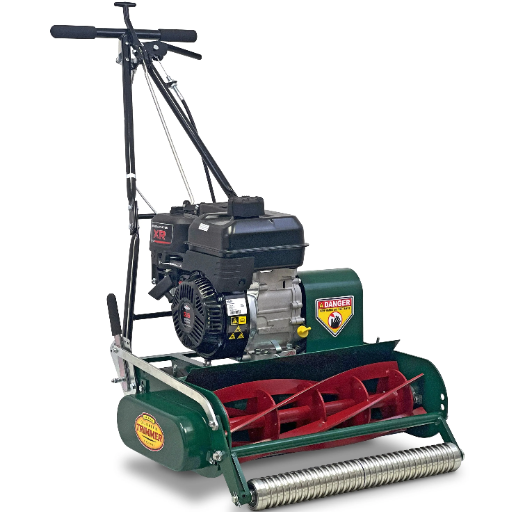
- Environment-friendly – Using manual power exclusively, reel mowers produce no emissions and maintain a minimal carbon footprint, at least compared to gas-powered ones.
- Cost-Effective – Reel mowers are less expensive to run, requiring no gas, oil, or electricity, and are easy to maintain.
- Better for Lawns – Since reel mowers work with a shearing action, the blades can cut more cleanly, giving healthier and stronger growth to the grass.
- Less Noisy- In contrast to the clanking noise of many gas mowers, reel mowers operate with less sound, giving the user a serene mowing experience.
- Click To Safe to Use- Because of simpler mechanism and no high-speed blades, reel mowers in general are safer for any users or the surroundings.
Eco-Friendly Lawn Care
Modern eco-friendly lawn care focuses on sustainability and preservation of resources, which thus help the lawn and also the environment. Water-wise lawn culture means one-half of water wastage can be prevented through using drip irrigation systems or watering lawns very early in the mornings. Natural fertilizing techniques, like adding compost or applying organic nitrogen-based amendments, fertilize soil further while preventing pollution runoff traceable to chemicals and synthetic fertilizers. Studies prove that organic lawn care methods promote biodiversity, supporting pollinators such as bees and butterflies and thus leveling up the ecosystem as a whole.
Maintenance decisions also influence aspects of environmentally friendly care. Mowing the lawn at a height of 2.5 to 3 inches allows moisture retention to be enhanced and weeds to be suppressed, limiting the reliance on chemical herbicides. If you mulch grass clippings during mowing, they serve as natural fertilizers, maintaining the nutrient cycle within the soil. These considerations would help you foster a luscious lawn while enhancing the ecosystem.
Advantages Over Traditional Lawn Mowers
Advancements in lawn care technology have indeed been a great boon in improving efficiency, sustainability, and comfort. While traditional mowers are gasoline-fueled, many newer electric models are one step ahead with less harmful emissions released in the atmosphere. Recent studies have claimed that in its lifespan, an electric lawn mower might well be able to reduce greenhouse gas emissions by up to 50 percent as compared with one powered by gasoline.
Modern mowers are perhaps beneficial for their quieter operation in residential areas for fear of noise pollution, in contrast to traditional loud industrial mowers. Certain smart lawn mowers incorporate features such as GPS navigation and AI-based systems to allow for precision mowing and considerable time savings, for instance: Owing to robotic mowers, the lawn may be maintained autonomously within a predefined boundary, which significantly cuts down on manual labor and provides much-needed free time for the user.
Maintenance costs are another major advantage for consideration. Electric models require less maintenance; there are fewer moving parts, with no need to change oil or gasoline, culminating in really encouraging cost savings over time. Also, by virtue of their lightweight construction and ergonomics, they are easy to operate, therefore mowing is a job that many can undertake. Modern lawn mower technology provides homeowners with a green, time-efficient, and hassle-free alternative to lawn care.
Cost-Effectiveness and Maintenance
Electric lawnmowers are modern and eco-friendly, especially when regarded through the prism of long-term cost-effectiveness. Electric mowers have been observed to undergo at least 50% less maintenance than their gas-powered counterparts. This lesser maintenance, at least in part, is because there simply are no consumables such as air filters, spark plugs, or carburetors that constantly wear out on gas machines and have to be changed. To add ominous darkness to this, the cost of electricity to run an electric mower is much cheaper than the cost of gasoline with an estimated yearly saving of about $50 to $100 depending upon the frequency of the mower’s usage.
From an upkeep perspective, electric mowers typically feature brushless motors with a longer working lifetime and few breakdowns. These features lower repair costs and ensure that the mower performs well over time. Lightweight designs and quieter operations also contribute to user comfort by reducing vibrations and noise pollution, particularly in a residential setting. Over time, the savings realized by moving towards electric mowers provide homeowners neither with an ostentatious display of cost nor a compromise on quality or effectiveness.
Choosing the Right Reel Mower
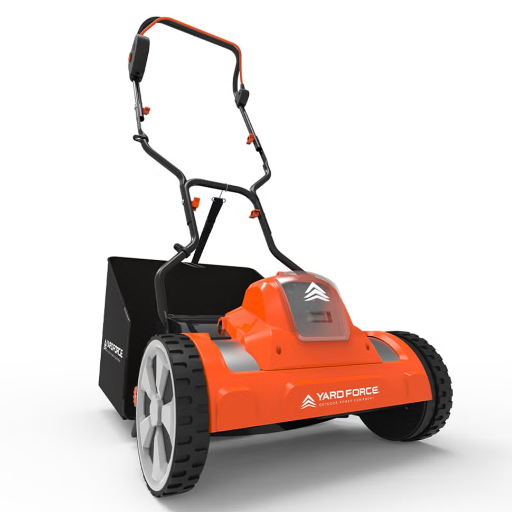
When speaking about reel mowers, considerations must be given to the size of the lawn, the grass type, and personal preferences. For smaller gardens, an easy-to-work-with lightweight reel mower cutting between 14 and 18 inches in width is perfect. For heavier or taller grass, examine adjustable blade heights for different heights and a heavier cutting mechanism. Also, the handles must be ergonomically designed to afford comfort during use, while the blades should be rust-proof. Everybody should check product reviews and star ratings and ask fellow users for independent feedback as some products may appear great but in actual use are not.
Factors to Consider: Cutting Width and Height Adjustment
- Cutting Width
The cutting width of a lawn mower determines how much grass it can cut in a single pass. For small to medium-sized lawns, a cutting width of 14-18 inches is sufficient, allowing for maneuverability in tight spaces. For larger lawns, consider models with a cutting width of 20 inches or more to reduce the number of passes needed, saving time and energy.
- Height Adjustment Options
Adjustable blade heights are essential for accommodating different grass types and seasonal growth variations. A good lawn mower should offer a range of cutting heights, typically between 0.5 inches to 4 inches. Multi-position settings, often ranging from 3 to 7 levels, provide better control and flexibility, ensuring a clean and even trim regardless of grass conditions.
- Ease of Adjustment
Look for models with a user-friendly height adjustment mechanism. Single-lever controls are more convenient and efficient, enabling quick changes compared to older designs with individual wheel adjustments.
- Grass Type and Location
Thicker grass or uneven terrains may require mowers with enhanced cutting width and adjustable height settings to tackle varying challenges effectively. For example, dense Bermuda or St. Augustine grass may need a mower with a higher-cutting-power mechanism combined with precise height control.
- Durability and Precision
Choose mowers with high-quality blades and strong construction materials that maintain consistent cutting width and height accuracy over time. Ensuring the mower’s durability will enhance cutting performance and minimize wear from frequent usage.
Manual vs. Powered Reel Mowers
Manual reel mowers are eco-friendly, quiet, and require physical effort, while powered reel mowers are efficient, suitable for larger lawns, and require fuel or electricity.
|
Parameter |
Manual Reel |
Powered Reel |
|---|---|---|
|
Eco-friendly |
Yes |
No |
|
Noise |
Quiet |
Moderate |
|
Effort |
High |
Low |
|
Cost |
Low |
High |
|
Maintenance |
Low |
Moderate |
|
Efficiency |
Low |
High |
|
Lawn Size |
Small |
Large |
|
Cut Quality |
Precise |
Precise |
|
Debris Handling |
Poor |
Good |
|
Fuel/Energy |
None |
Required |
Popular Brands: American Lawn Mower, Scotts, and Fiskars
American Lawn Mower, Scotts, and Fiskars are popular reel mower brands known for their durability, precision, and eco-friendly designs.
|
Parameter |
American Lawn Mower |
Scotts |
Fiskars |
|---|---|---|---|
|
Durability |
High |
Moderate |
High |
|
Cut Quality |
Precise |
Good |
Superior |
|
Eco-Friendly |
Yes |
Yes |
Yes |
|
Weight |
Light |
Moderate |
Heavy |
|
Price |
Affordable |
Moderate |
Premium |
|
Blade Count |
4-5 |
5 |
5 |
|
Cut Width |
14-18 inches |
14-20 inches |
18 inches |
|
Ease of Use |
Easy |
Moderate |
Ergonomic |
|
Best For |
Small lawns |
Steep hills |
Large lawns |
Tips for Mowing with a Reel Mower
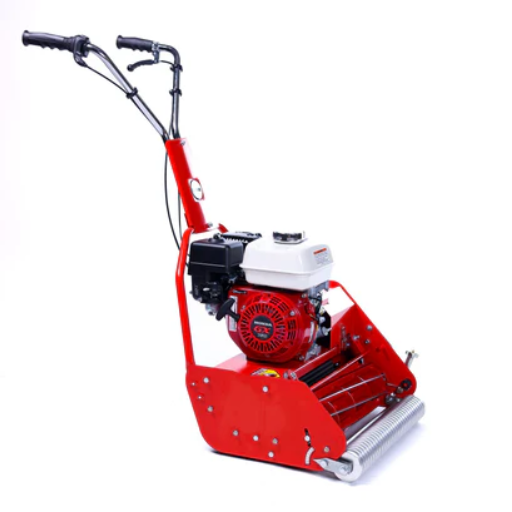
1. Keep Blades Sharp
Always sharpen blades for clean cuts. Dull blades tear grass, fostering diseases along with undesired looks.
2. Mow When the Grass is Dry
Grass is dry under which it is to be mowed so that it does not clog up and cuts smoothly.
3. Change Cutting Height
Change time of cutting height on the basis of the season and grass type. This will promote good grass growth and avoid scalping.
4. Clear the Lawn First
Keep the lawn free of debris like stones, branches, and sticks, which could, in turn, damage the mower and blades.
5. Mow Regularly
Try to mow often since reel mowers do best with short grass. Allowing grass to get tall will impede mowing and will make it less effective.
Proper Mowing Techniques
1. Sharpening the Blades Regularly
For a clean cut, making it necessary for the well-being of the lawn, mower blades must be sharp. A dull blade can tear grass rather than cut it, turning brown at the ragged edges and making the lawn a little more vulnerable to diseases. The suggestion by experts is to sharpen the blades after 20 to 25 hours of mowing for the best performance.
2. Observe the One-Third Law
More than one-third of the grass should never be mown in any single mowing. Stressing the grass is tantamount to reducing the ability of the grass to photosynthesize effectively. If for some reason you had grass of 3 inches tall, trim no more than 1 inch in height. Following the rule, will surely encourage a good and green lawn.
3. Mow While the Grass Is Dry
Mowing wet grass causes the grass to cut in irregular cuts, then clumps could end up in some areas of the lawn. Secondly, wet grass is a nuisance for your mower. Let the grass dry up after rainfall or morning dew before you start mowing.
4. Change the Pattern of Mowing
Mow in different directions every time you cut the lawn to prevent the grass from leaning toward one side and to develop more upright growth. In other words, if you had mowed last week from north to south, try going from east to west now. This also helps the soil from being compacted by the mower wheels.
5. Maintain Ideal Grass Heights for Lawn Type
Different species of grass prefer to be kept at different heights. For example, Kentucky bluegrass grows best at heights between 2.5 and 3.5 inches, while Bermuda grass grows better in a range of 0.5 to 2 inches. Knowing the height range your grass should be cut at will thus ensure proper growth and good health.
Adjusting Cutting Height for Optimal Results
Cutting heights should be adjusted based on the special needs of the particular type of grass. For example, I usually set my mower within the recommended height range for the kind of grass in my yard so that such practice promotes healthier growth while stressing it less. Throughout the year, I maintain a green and resilient lawn by extending or reducing my mower height with the passing of seasons depending on how fast or slow the grass tends to grow in such periods.
Using a Grass Catcher Effectively
A grass catcher is really helpful in yard maintenance because it collects clippings that otherwise ruin lawns with messy patches. To maximize its performance, the grass catcher should be aptly attached to the mower and emptied once it becomes about two-thirds full to prevent clogging or diminished effectiveness. Timing should also be taken into consideration-mowing when the grass is dry to prevent clumping and ease collection. Studies show that regular grass catcher use reduces thatch buildup and, thus, allows the grass to flourish. Collected grass clippings would, of course, also work well as a compost, which could work miracles for nutrient needs of gardens and flower beds. Ensure to keep the grass catcher clean from debris after each use for maximum efficiency, improving its lifespan and reducing wear.
Reel Mowers for Different Applications

Reel mowers are multipurpose machines that cater to various lawn care needs. For small residential yards, lightweight push reel mowers offer an environmentally friendly and less-intensive option. Motorized reel mowers, on the other hand, supply the power and efficiency to care for larger properties or landscaping companies. Moreover, reel mowers are suitable for the maintenance of more delicate or specialized types of grass, such as those on golf courses or sports fields, where the blades cut like scissors, thus promoting neater and healthier grass growth. To get optimum usage out of the mower, always choose a reel mower for the size of the lawn, terrain, and type of grass.
Mowing Sports Fields vs. Residential Lawns
Mowing sports fields requires frequent, precise cuts for durability and playability, while residential lawns focus on aesthetics and lower maintenance.
|
Parameter |
Sports Fields |
Residential Lawns |
|---|---|---|
|
Frequency |
2-3 times/week |
Weekly or bi-weekly |
|
Height |
1-3 inches |
2-3 inches |
|
Focus |
Durability, playability |
Aesthetics |
|
Equipment |
Reel/rotary mowers |
Rotary mowers |
|
Maintenance |
High |
Moderate |
|
Traffic |
High |
Low |
|
Clippings |
Removed or mulched |
Mulched or left |
|
Cost |
Higher |
Lower |
Using Reel Mowers for Eco-Friendly Landscaping
In recent times, reel mowers have been highly commercialized as environmentally friendly tools for landscaping, fitting into the environmentally friendly culture where anything that offsets environmental impact is promoted. Unlike traditional motor gasoline mowers, reel mowers rely on human power or minimal electricity, thus not generating greenhouse gas emissions posing a threat to air pollution. The study by Environmental Protection Agency (EPA) confirms that these fueling lawn mowers emit a high percentage of carbon dioxide and nitrogen oxides during the course of the year, thus putting their manual versions into the cleaner options perspective.
Moreover, reel mowers yield a quieter mowing session, as opposed to the noise generated by petrol-powered mowers, mitigating ambient noise pollution on residential sites. Lastly, they prove to be economically beneficial since reel mowers require very little maintenance: $0 for fuel, less formal maintenance for engines, and if handled well, they can be expected to last for a long time. Without any fuel combustion pollutants discharged into the ground, reel mowers lend a helping hand to restore better ecosystems.
For an eco-thinker landscapers, this is best paired with native plants and organic means that will encourage biodiversity and complement irrigation systems that conserve water. With advances in lightweight materials and ergonomic designs, modern reel mowers fit different lawn sizes and terrain types, providing a valid option for those inclined to keep greener and healthier environs.
Innovative Features: Hybrid and Cordless Options
Recent lawncare technology now gives impetus to the increase in hybrid and cordless reel mowers, combining convenience with sustainability. Hybrid reel mowers employ manual mechanics combined with battery assistance for additional cutting power usually needed for thicker grass or rough terrain. It is perceived as a tool for those who want to efficiently and precisely mow their lawn without harming the environment.
Unlike their hybrid mates, cordless reel mowers function entirely on their rechargeable lithium-ion batteries, requiring no fuel or cords. Many models boast impressive battery lives varying between 45 to 90 minutes per charge to suit the needs of small, medium, and large-sized lawns. Some cordless reel mowers even feature adjustable cutting heights, steel blades, and ergonomic designs to ensure practicality and ease of use.
From recent market trends, one sees there is a growing demand for innovations providing such needs. Bigger and better noise reduction, emissions, and physical stress are offered by these new-age models as opposed to traditional ones. While one-way hybrids and cordless options carry a bit more energy efficiency and less environmental disadvantage, they do appear to be futuristic variants for the home to another green-conscious customer-shopper.
Reference Sources
-
Oregon State University – Newsroom: Choose a lawn mower to fit your needs
This source discusses different types of mowers, including reel mowers, and their maintenance requirements. -
University of Minnesota Extension: Mowers and mowing safety
This page provides detailed information on reel and rotary mowers, including their usage and safety considerations. -
U.S. Consumer Product Safety Commission (CPSC): Regulatory Summary Lawn Mowers
This document outlines the regulatory standards for reel-type mowers and their design features.
Frequently Asked Questions (FAQs)
What is a reel lawn mower and how does it work?
A reel lawn mower is a type of manual lawn mower that uses a cutting cylinder with blades to trim grass. It operates through a push mechanism, where the user pushes the mower forward, causing the blades to rotate and cut the grass. This eco-friendly option is ideal for maintaining a quality cut on small to medium-sized lawns.
What are the advantages of using a push reel lawn mower?
Push reel lawn mowers are lightweight, easy to maneuver, and quiet compared to gas-powered mowers. They offer a clean cut that promotes healthy grass growth and are also more environmentally friendly. Additionally, they require minimal maintenance and no fuel or power tools, making them cost-effective in the long run.
How do you maintain a reel mower for optimal performance?
To keep your reel mower in good condition, regularly check and sharpen the blades to ensure a clean cut. Adjust the cutting height for different grass types, such as zoysia or tall grass, and clean the mower after each use to prevent clippings from clogging the blades. Proper maintenance will extend the life of your mower.
What is the cutting height adjustment feature in reel mowers?
The cutting height adjustment feature allows users to set the desired grass length by raising or lowering the cutting cylinder. This is particularly useful for adapting to various grass types and lawn conditions, ensuring that your lawn maintains a lush appearance while avoiding scalping.
Can a rear roller improve the performance of a reel mower?
Yes, a rear roller can enhance the performance of a reel mower by providing better traction and stability during operation. It helps create a smooth finish by flattening the grass as it mows, resulting in a uniform surface. This feature is beneficial for achieving a professional-looking lawn.
What types of grass are best suited for a push mower?
Push mowers are ideal for maintaining common grass types like fescue, bluegrass, and zoysia. These grasses thrive with a clean cut provided by the cutting cylinder of a reel mower, promoting healthy growth and a vibrant lawn. It’s important to adjust the cutting height based on the specific grass type for optimal results.
Are there warranties available for reel lawn mowers?
Many manufacturers offer warranties for reel lawn mowers, covering defects in materials and workmanship. It’s advisable to check the warranty details before purchasing to ensure you are protected against potential issues. A good warranty can provide peace of mind and assurance of quality.
How does a self-propelled reel mower differ from a standard push mower?
A self-propelled reel mower has a motor that assists in moving the mower forward, reducing the effort required from the user. This feature is beneficial for larger lawns or uneven surfaces, making it easier to maintain a consistent cutting speed and quality cut without excessive pushing.
What is the significance of the cutting cylinder in a reel mower?
The cutting cylinder is the core component of a reel mower, consisting of several blades that rotate as the mower moves. It is crucial for delivering a precise and clean cut. The cylinder should be regularly maintained and sharpened to ensure it stays sharp and effective for optimal lawn care.





